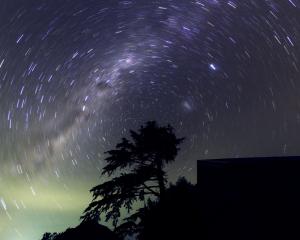

The 22° halo might sound like a rare occurrence, but it’s actually quite common. It happens when ice crystals refract sunlight in high-flying cirrostratus clouds.
Because the crystals are randomly oriented in their parent clouds, no two halos are ever quite the same. Sometimes, the colours are vibrant and clear; other times, the halo is colourless. I’ve noticed that the inner red tends to steal the show, standing out against the azure background, thanks to how red light behaves in the atmosphere.
Since moving to New Zealand, I’ve been fortunate enough to witness halos around the sun, the moon, and even Venus and Jupiter.
From ancient times, the appearance of a halo was seen as a celestial warning, a signal that rain or a storm was approaching.
Growing up in England, I was familiar with the old saying, "If a circle forms around the moon, ’Twill rain soon."
There’s some scientific wisdom behind this folk knowledge, as cirrostratus clouds, the same ones responsible for haloes, can signify the approach of a weather-changing frontal system.
So, there you have it — a walk with Connie turned into an atmospheric escapade, a reminder always to gaze upwards and embrace the wonders on offer in the sky.











